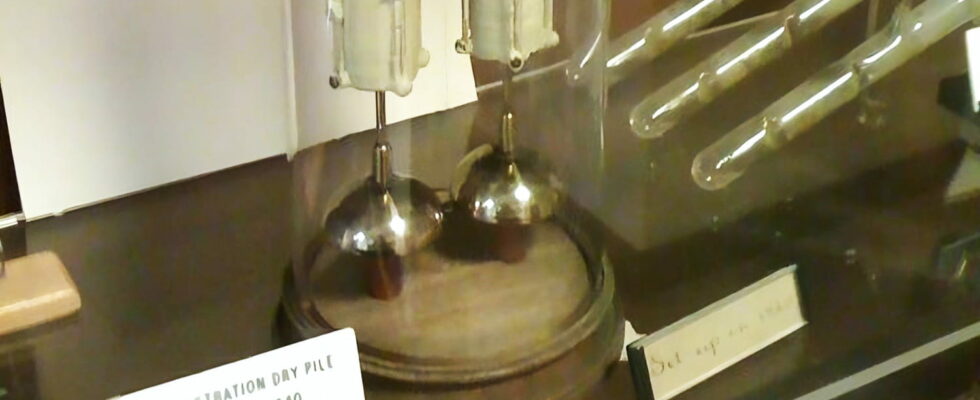At the famous Oxford University, an electric carillon has been operating continuously for almost two centuries using a battery that still retains its secret to science.
At the heart of Oxford University, an extraordinary object continues to defy the laws of time: it is an electric carillon known as the Oxford Electric Bell, which has operated continuously on battery power since… 1840! And even if it diminishes over time, its discreet ringing can still be heard under the glass bell that protects it. , , makes this bell one of the oldest scientific experiments in the world. But what is the secret of its extraordinary longevity?
It was the Reverend Robert Walker, professor of physics at Oxford, who acquired the bell in 1840. Today, it sits in the university’s Clarendon Laboratory, protected by two layers of glass. Hence its nickname, Clarendon Dry Pile, which refers to its type of “dry pile” and its location. Indeed, it is one of the first models of electric batteries, made up of stacked metal discs.
One of the keys to its longevity is its low energy consumption. The bell requires little current to operate and loses very little. “The movement of the lead pendulum strikes the two bells, continually charging and discharging them. A tiny amount of energy flows between the two ends, the only loss being air resistance”explains Dr Robert Taylor, one of the leaders of the experiment at the University of Oxford.
The composition of the batteries themselves could also explain their exceptional durability. However, this is where the mystery thickens. While scientists have hypotheses, no one knows with certainty the exact nature of the materials used. They are called “dry piles” because they resemble those made by the Italian physicist Giuseppe Zamboni. These Zamboni batteries consisted of approximately 2,000 pairs of aluminum foil disks glued to paper impregnated with zinc sulfate and coated on the other side with manganese dioxide. The Oxford batteries are also sealed in an outer shell believed to be made of sulfur, giving them a candle-like appearance. Of course, these aren’t actually candles, otherwise the system wouldn’t work! But without opening the batteries, which would ruin the experiment, it’s impossible to know precisely what’s inside them and how that contributes to their longevity.
Despite its remarkable resistance, the Oxford Battery is not immortal. Its uninterrupted ringing for almost two centuries could soon end. “It is expected to continue operating for another five or ten years, because its pace has slowed significantly over the past 40 years. But it will inevitably stop because it will run out of energy.”, warns Dr. Taylor. “All batteries eventually die.”, he concludes. Regardless, the Oxford Electric Bell will remain a fascinating symbol of human ingenuity and a reminder that even the smallest inventions can hold great mysteries. Its tireless ringing, like an echo from the past, will continue to echo through the corridors of Oxford University, until silence finally prevails.
